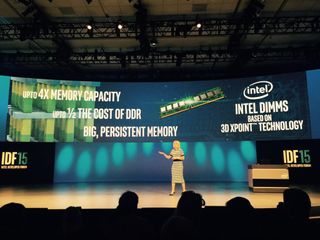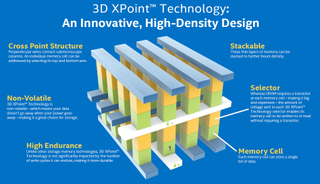Intel announces Optane SSDs for 2016, seven times faster than current SSDs

Intel is developing a new kind of solid state drive called Optane, planned for release next year. Intel says that the memory in the Optane drives can operate up to 1,000 times faster than the NAND flash used in today’s SSDs. According to AnandTech, Optane drives will be available in both PCIe SSD and DIMM form factors.
Optane drives are based on a technology called 3D XPoint, which is being developed by Intel and Micron. Current flash technology is fine for everyday use, and we’re just beginning to see PCIe-based SSDs in consumer hardware, but tasks which require a huge amount of data can be bottlenecked by the speeds. According to Technology Review, Rob Crooke, a general manager on Intel’s memory project said that the new technology will improve everything from gaming to medical research done by supercomputers. “We expect to see breakthroughs in personalized medicine, in business analytics to allow companies, cities, and maybe countries to run more efficiently.”
Flash memory uses a grid of electrons to store binary data. Drives running on 3D XPoint technology use stackable, perpendicular wires which connect submicroscopic columns. Data is stored at the crossing points of these wires by using electricity to change the composition of atoms trapped there.

Just like flash memory, this new technology is non-volatile, meaning data is stored even when the power is switched off. However in Optane drives, individual data cells do not need big and expensive transistors (in relation to the size of the cell) to read or write data. They are also supposedly more durable than current drives, because they are not significantly impacted by how many write cycles they perform. That could be just as important as the speed increase long-term, as it could make the 3D XPoint memory a viable competitor with hard disks and magnetic tape for archival storage.
Intel gave the first demo of 3D XPoint at the Intel Developer Forum yesterday, pitting the new drive against its high-end P3700 SSD (which has read speeds of up to 2700 MB/s). The new drive delivered over 7 times the IOPS (input/outputs per second) performance. We’ll see if Intel’s Optane drives live up to those benchmark speeds in everyday use if they do release in 2016. Any bets on the price?
The biggest gaming news, reviews and hardware deals
Keep up to date with the most important stories and the best deals, as picked by the PC Gamer team.
Most Popular







